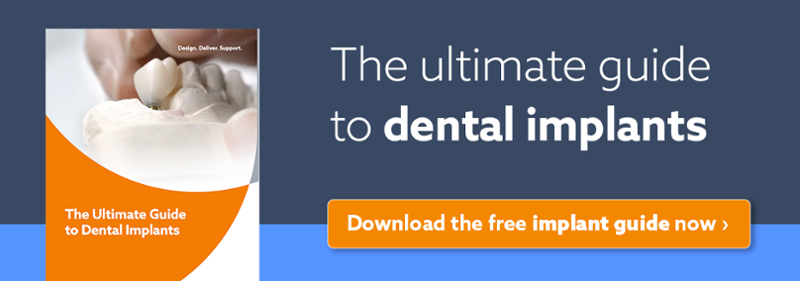If you haven’t already, it is highly likely that you’ll see people receiving oral bisphosphonates. These patients will often require additional care during routine dental procedures, such as tooth extractions.
Osteoporosis is becoming increasingly prevalent in older adults, most often in postmenopausal women. Hip, spine, and wrist fractures are the most common injuries. Antiresorptive therapies such as oral bisphosphonates have been shown to reduce the risk of fractures. Intravenous bisphosphonates are prescribed to treat multiple myeloma and metastases associated with prostate or breast cancer. This therapy is associated with a far-higher risk of osteonecrosis in the jaw (ONJ) because intravenous bisphosphonates have a longer half-life and higher dosages are prescribed. The risk is reduced for patients receiving oral bisphosphonate therapy for low bone density, but is still significant.
Currently, there is no effective treatment for ONJ caused by bisphosphonate therapy. This is why it’s important to take precautions during dental extractions to help prevent this side-effect. While taking precautions can minimize the risks of ONJ, it cannot eliminate them completely.
Caring for Patients Receiving Oral Bisphosphonate Therapy
When you need to treat a patient receiving oral bisphosphonate therapy, it’s important to determine their level of risk. Most cases of osteonecrosis have developed in people with a history of dental disease and invasive dental procedures. Dental extractions are significant risk factors, as is periodontal disease, smoking, and poor dental hygiene. Ideally, a patient will come to see you before they begin bisphosphonate therapy, so any surgical procedures can be performed prior to therapy beginning. However, this is often not the case. Talking to your patient about the possible risks of ONJ is important so you can gain their written consent prior to any treatment.
What to Do If Your Patient Does Need a Dental Extraction
If your patient does require a dental extraction, it is best to communicate with the physician prescribing bisphosphonate therapy. With some patients, it may be possible to temporarily interrupt the delivery of the drug. The risk of ONJ developing after a dental extraction will also depend on the duration of bisphosphonate therapy. For a patient who has been receiving bisphosphonates for less than two years, the risk remains low, increasing with the length of therapy. It is also worth discussing alternative treatment plans with your patient if appropriate. One such plan may include endodontics, where the tooth is endodontically treated followed by removal of the clinical crown. This could be preferable if you have a patient where the risk of ONJ is higher and if there is a possibility that tooth is salvageable.
Before the extraction, it may be helpful to begin antibiotic prophylaxis one day before surgery and extending up to a week after the extraction. There is some evidence that antibiotics combined with chlorhexidine can reduce the risk of ONJ. During surgery, make sure your dental team knows that infection-control procedures are even more important and sterile techniques must be followed with meticulous attention. When carrying out the extraction, ideally it should be performed using atraumatic extraction or conservative extraction techniques, minimising damage to the surrounding bone. After the tooth is removed, primary tissue closure should be considered or if primary closure isn’t a realistic option, you might wish to think about placing a semipermeable membrane over the extraction site.
Once surgery is completed, talk to your patient about the importance of maintaining good oral hygiene. Make sure they use chlorhexidine mouthwash twice daily for two months or as long as you recommend, complete any antibiotic treatment and attend post-operative follow-up appointments.

Please be reminded that our experienced technical team is here to assist you should you wish to discuss a case in more detail.
Click here to schedule a consultation with our technical team »
References:
https://www.ncbi.nlm.nih.gov/pmc/articles/PMC3942225/
https://www.aae.org/uploadedfiles/publications_and_research/endodontics_colleagues_for_excellence_newsletter/bonj_ada_report.pdf